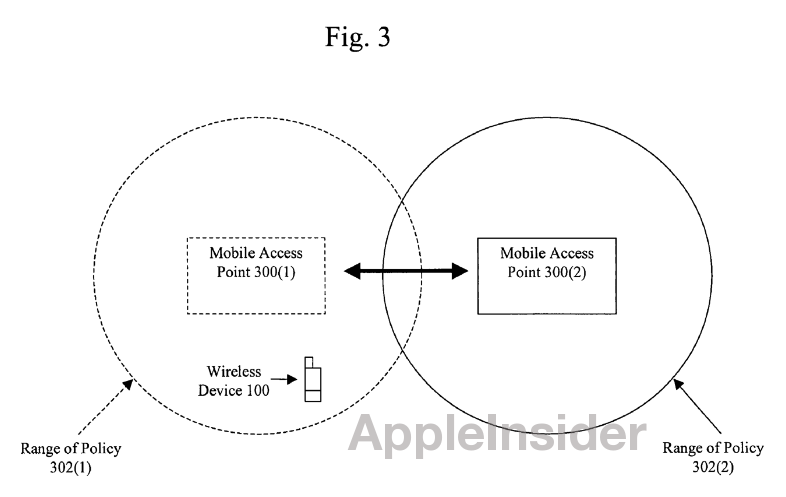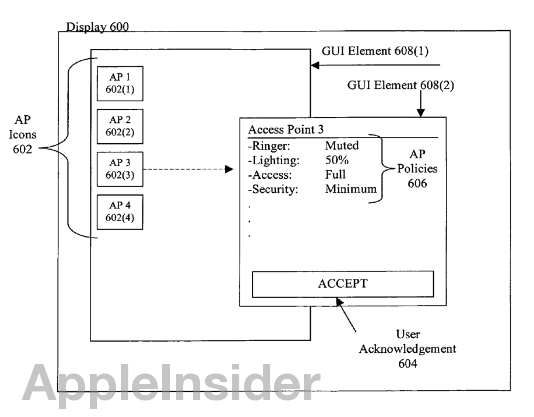Among the mountain of patents awarded to Apple on Tuesday, a property relating to wireless device "enforcement policies" could signal the inclusion of dynamic, location-aware iPhone settings.
Apple's U.S. Patent No. 8,254,902 for "Apparatus and methods for enforcement of policies upon a wireless device," looks to solve the problem of unwanted phone notifications, such as having a ringer go off in a classroom setting.
The new invention can create customized alert profiles for a number of situations by using a variety of methods, including GPS, cellular triangulation and WLAN communication. Calling on a set of predefined rules called "policy enforcement," a device's actions, or lack thereof, can be dynamically changed to create a situationally aware phone.

Source: USPTO
From the patent's abstract:
This policy enforcement capability is useful for a variety of reasons, including for example to disable noise and/or light emanating from wireless devices (such as at a movie theater), for preventing wireless devices from communicating with other wireless devices (such as in academic settings), and for forcing certain electronic devices to enter "sleep mode" when entering a sensitive area.
Apple is relying mostly on radio technologies to achieve its intended goal. For example, in one embodiment, the device communicates with a Wi-Fi base station and selects the correct alert parameters according to the unit's profile, as would be the case in a classroom. In this case, a phone could be switched to vibrate or enter sleep mode.

In another example, GPS is used to define the handset's location, thereby triggering another profile suitable for the situation. A version of this kind of tech is seen in the existing geofencing feature in iOS 5, which allows users to set reminder alerts that will go off when they get home or reach their office. The functionality is limited, however, and is apt to drain an iPhone's battery.

Being controlled by the system are tones, display brightness, radio communications and a number of high-function features that comprise a modern day multi-function device. A logic system is employed to give the system a moderate level of intelligence, freeing the user from pre-setting some of the "policies" beforehand.
It is unclear when or if Apple will use the patent.